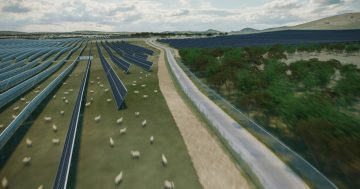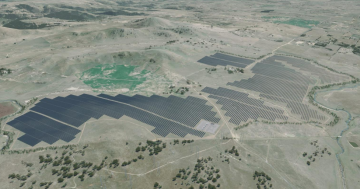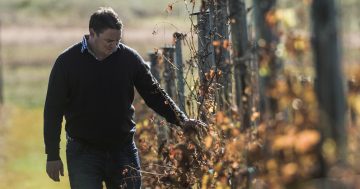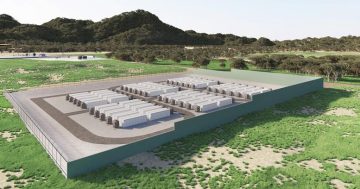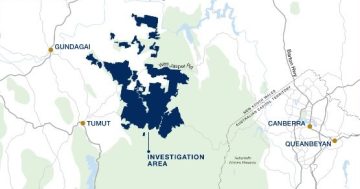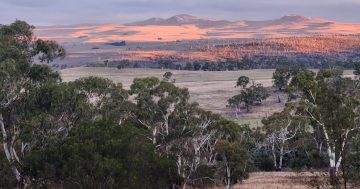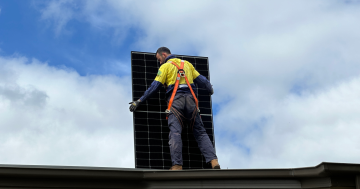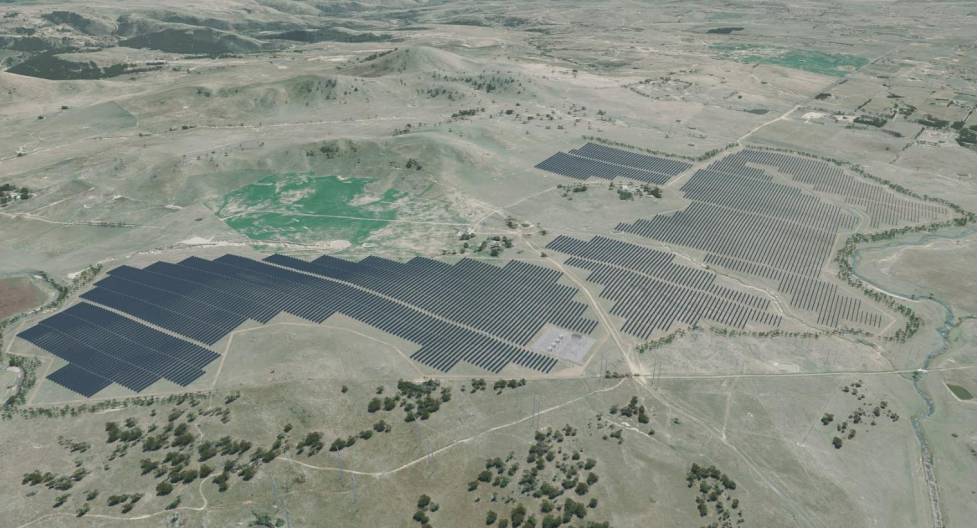
An early artist’s impression of the proposed Wallaroo solar farm. Image: New Energy Development.
We need more solar farms generating electricity as part of the transition to an emissions-free power grid, but have the proponents of the $166 million Wallaroo project just across the northern border been a bit too clever?
It’s a big one, covering 750 football fields and involving 182,000 rotating panels and associated infrastructure, including battery storage and a substation connected to nearby transmission lines.
It will be capable of producing enough clean, renewable energy to supply about 48,000 homes in NSW and the ACT.
Everybody seems to think that, in itself, it’s a good thing. Just not near them.
Eyesore, loss of rural land, bad for tourism, fire risk and potentially damaging to the environment are some of the objections, including from Yass Valley Council.
If it wasn’t sited less than a kilometre from Belconnen suburbs, that’s where the row might rest.
But border residents on the ACT side are just waking up to a sizeable development happening across the border within eyesight, despite it being on the drawing board for five years.
And now we are only three months out from the ACT election, and Labor is a bit edgy about the Belconnen-based Ginninderra electorate, considered to be the poll wild card.
In 2022, the government said it had nothing to do with us and told the Opposition to direct their questions to the proponents.
Now, the Chief Minister is writing to the NSW Premier.
In NSW, solar developments aren’t supposed to happen within 5 km of residential areas, but some Canberra homes are only 800 metres from the Wallaroo site.
The locals cannot but conclude that the proponents have been a bit sneaky in choosing a site in NSW and erasing whole communities because they are in a different jurisdiction.
The ACT Government may also be thinking about road access and the bushfire risk.
The proponents argue the project’s public benefits outweigh the downsides, and they are doing all they can to mitigate concerns so the development will be embedded in the landscape and hardly be seen.
The site itself has its attractions, being near transmission lines. And from the project documents, it seems residents nearby will be offered discounted power.
Interestingly, the conversation online has favoured the proponents, arguing that clean energy trumps landholders and residents’ concerns and there could be much worse things than a solar farm to contend with.
But those people probably aren’t next door or in the line of sight.
The problem for the proponents and the NSW Government is that the spirit of planning rules shouldn’t evaporate at the border.
And now there is cross-border interest in what’s going on.
The ACT Government and Canberrans, in general, are strong supporters of renewable energy. The political calculus will be just how many border residents are so horrified at the prospect that they protest at the ballot box if Labor doesn’t seem sufficiently concerned about the situation.
Considerable opposition to renewables is being stirred up in the countryside and on the coast, some with the aid of politically motivated misinformation.
Even some of the online chatter about this project has the whiff of such stuff.
Nonetheless, buffer zones exist for a reason and a border is not the same.
The result may be that the proposal becomes a smaller one, if viable.
But the lesson for proponents is to consult, consult and consult some more to get communities on board.
For communities, renewable energy can’t be siloed out of sight and mind. There are worse alternatives. Just ask rural areas where there is fracking, gas wells, open cut coal mines and dirty coal-fired power stations.













